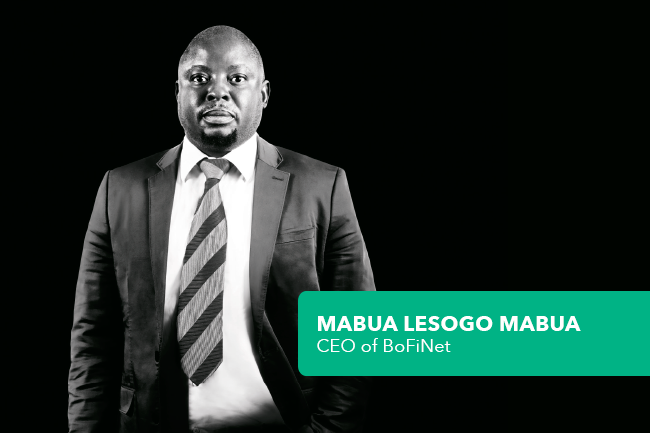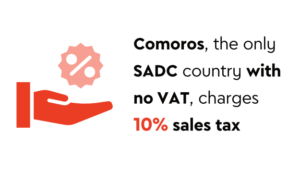With land links to Namibia, South Africa, Zambia and Zimbabwe, Botswana’s geographic position places it directly on the doorstep of the African continent. The local population is small and sparse, with about 70% of the country’s total territory taken up by the Kalahari desert. Yet Botswana is already well-established as a regional transport hub, and it’s now emerging as a hub for regional telecoms too. At the centre of it all is Botswana Fibre Networks Limited (BoFiNet), the government-owned wholesale provider of national and international telecoms infrastructure, which currently boasts more than 9 000 km of connectivity to power the country and the continent’s digital revolution.
‘There has been a rapid growth of data traffic flow within the region as well as outflow of traffic to Central and North Africa,’ says BoFiNet CEO Mabua Lesego Mabua.
‘By virtue of its geographical position, Botswana is well-placed to be the regional data traffic interchange hub. The robust and extensive coverage of the BoFiNet fibre infrastructure positions the country as an ideal location for data centre services and storage facility.’
That rapid growth has been powered by significant investment. In the financial years 2014 to 2017, the Botswana government, through BoFiNet, invested a total of BWP701 million in the national backbone and local internet access networks. ‘The aggressive deployment of the national backbone fibre rings was geared towards building an inland redundancy through a scalable, meshed and protected backbone network, based on reliable DWDM, IP/MPLS and SDH platforms,’ says Mabua.
‘The multiple cross-border/international routes to neighbouring countries have positioned Botswana as a transit hub and an international gateway to Southern and Central Africa, offering a range of dedicated and secure end-to-end capacities.’
That robust fibre network also contributes towards bridging the gaps within the SADC regional and national integrated broadband infrastructure, and the SADC regional information infrastructure strategy, he adds. ‘It also has a positive impact on the integration of SADC member states’ efforts to deploy region-wide reliable, resilient, affordable, modern, fully integrated, interconnected networks.’
Mabua joined BoFiNet in 2013 from the Ministry of Transport and Communications, where he served as national co-ordinator of the ICT industry and permanent secretary. His many years of experience have given him a unique perspective on the sector’s challenges and opportunities and helped him forge a long-term view.
When asked how BoFiNet hopes to achieve the Botswana government’s mission of ‘access for all’, Mabua lays out a list of carefully considered solutions.
‘We need transformational change,’ he says. ‘Incremental change is no longer enough. Instead, transformational change supported by rapid innovation, bespoke solutions and a relentless focus on customer experience is required.’
Expanding on this, Mabua adds that ‘local industry players need to redefine their approach to customer engagement. Customer expectations and requirements have evolved, shaped by the globalised outstanding service in other sectors and countries. High-quality bespoke services and solutions are no longer an option but a rule. Digital tools and capabilities are creating more reliable, secure and autonomous networks with increased flexibility to meet diverse and dynamic customer requirements’.
The industry should start thinking ‘beyond the pipe’, according to Mabua. ‘Local operators need to reposition existing business models and launch new digital services, to move beyond connectivity to a new world of cross-industry competition and collaboration in order to accommodate OTT/IoT services and traffic,’ he says.
Ultimately, though, he sees the necessity within the ICT industry to bridge a divide in innovation. ‘The need for rapid innovation, greater convergence and new services requires operators to fill key capability gaps with new innovation models and revamped talent strategies for a “digital workforce”,’ he says, highlighting ‘antiquated governance and shareholding structures, outdated product development approach and lack of digital talent and leadership’ as some of the most prominent challenges.
Mabua believes that a business leader should be agile, with ‘the foresight to spot change on the horizon and take the lead in developing future strategies’. That approach is surely influenced by his own experiences in a country where internet penetration has ballooned from just 3.3% of the population in 2005 to an estimated 21.4% in 2016.
He outlines a handful of qualities that have helped him and the BoFiNet team to anticipate and respond to those rapid changes.
‘You need the right mindset, with the ability to apply an innovation lens to all areas of the business and decision-making. This drives your game plan and allows you to create a clear and flexible strategy for rapid response to change, and communicate that throughout your organisation,’ he says.
‘Project execution and innovation must be a collective priority through the business, from senior executives downwards. Innovation should be embedded in the DNA of the organisation and its people – particularly senior leadership.’

















